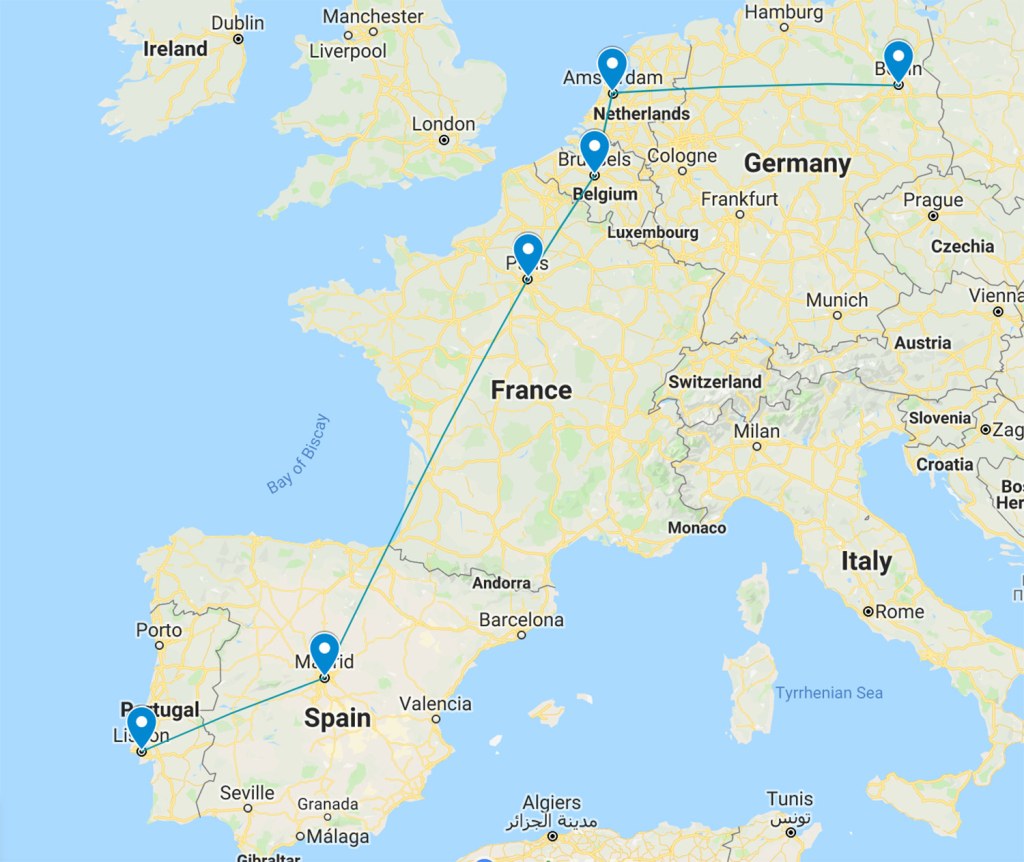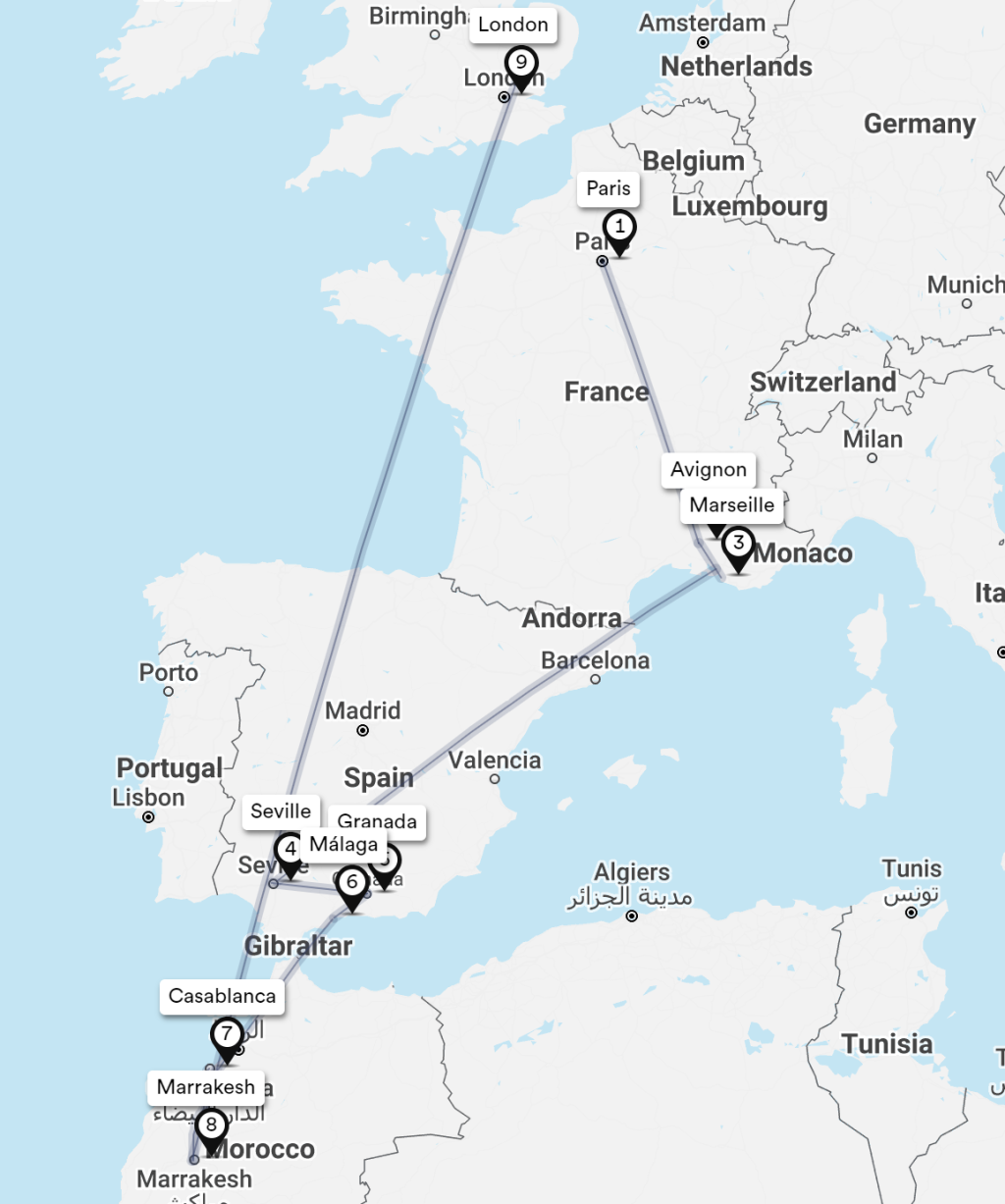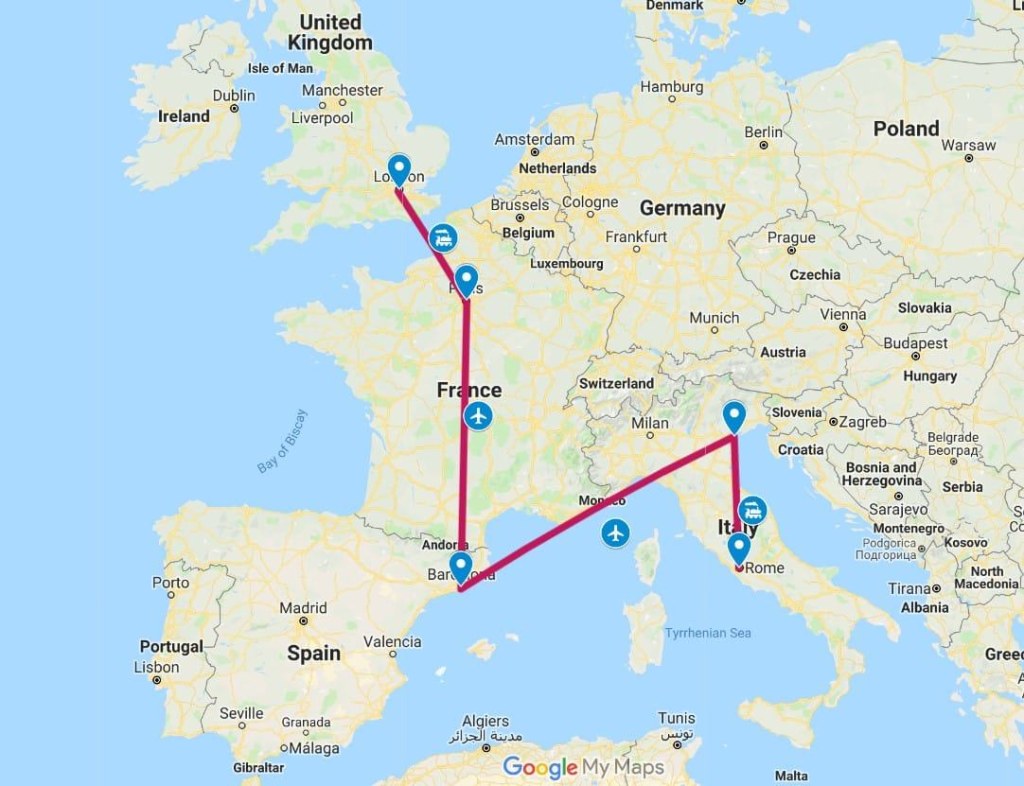Trip Itinerary for Europe
Introduction
Hello, Readers! Welcome to this comprehensive trip itinerary for Europe. Planning a trip to Europe can be an exciting yet overwhelming task, as there are so many incredible destinations to explore. In this article, we will provide you with a detailed guide on how to plan your trip to Europe, including top destinations, transportation options, accommodation choices, and more. Whether you are a first-time traveler or a seasoned globetrotter, this article will help you create the perfect itinerary for your European adventure.
Table of Contents
1. Introduction
2. Top Destinations

Image Source: theblondeabroad.com
3. Transportation Options
4. Accommodation Choices
5. Activities and Attractions
6. Local Cuisine
7. Safety Tips

Image Source: 2cupsoftravel.com
8. What to Pack
9. Budgeting
10. Travel Insurance
11. Language and Communication
12. Conclusion
Top Destinations

Image Source: findingtheuniverse.com
Europe is a continent that offers a wide variety of destinations to suit every traveler’s taste. From historic capitals to picturesque countryside, here are some of the must-visit places in Europe:
📍 Paris, France: Known as the City of Love, Paris offers iconic attractions such as the Eiffel Tower and the Louvre Museum.
📍 Rome, Italy: With its rich history and ancient ruins, Rome is a treasure trove for history buffs.
📍 Barcelona, Spain: This vibrant city is famous for its unique architecture, beautiful beaches, and delicious cuisine.
📍 Amsterdam, Netherlands: Explore the charming canals, visit world-class museums, and experience the laid-back atmosphere of Amsterdam.
📍 Prague, Czech Republic: Known as the City of a Hundred Spires, Prague boasts stunning architecture, a rich cultural heritage, and a lively nightlife scene.
📍 Santorini, Greece: Immerse yourself in the breathtaking beauty of Santorini, with its white-washed buildings, blue-domed churches, and stunning sunsets.
📍 Vienna, Austria: Discover the elegance of Vienna, known for its classical music, grand palaces, and coffeehouse culture.
Transportation Options
When traveling around Europe, there are several transportation options to consider:
📍 Flights: Europe has a well-connected network of airports, making it easy to travel between major cities.
📍 Trains: Train travel is popular in Europe, with high-speed trains connecting many countries and offering a convenient way to explore multiple destinations.
📍 Buses: Buses are an affordable option for traveling between cities and towns within a country.
📍 Rental Cars: If you prefer more flexibility, renting a car allows you to explore off-the-beaten-path destinations at your own pace.
📍 Public Transportation: Most European cities have efficient public transportation systems, including metros, trams, and buses.
📍 Walking and Cycling: Exploring on foot or by bicycle is a great way to immerse yourself in the local culture and discover hidden gems.
Accommodation Choices
Europe offers a wide range of accommodation choices to suit every budget and preference:
📍 Hotels: From luxurious five-star hotels to budget-friendly options, hotels can be found in every major city and tourist destination.
📍 Hostels: Ideal for budget travelers and backpackers, hostels provide affordable dormitory-style accommodations and a chance to meet fellow travelers.
📍 Vacation Rentals: Renting an apartment or a house is a popular choice for families or those seeking a home-away-from-home experience.
📍 Bed and Breakfasts: Stay in charming, family-run establishments that offer a comfortable room and a delicious breakfast.
📍 Camping: If you’re an outdoor enthusiast, camping allows you to immerse yourself in nature and enjoy stunning landscapes.
📍 Guesthouses: Experience local hospitality by staying in guesthouses, which are often family-owned and offer a more personalized experience.
📍 Couchsurfing: For those seeking an authentic local experience, Couchsurfing allows you to stay with locals for free.
Activities and Attractions
Europe offers a plethora of activities and attractions to suit every interest:
📍 Historical Sites: Visit iconic landmarks such as the Colosseum in Rome, the Acropolis in Athens, or the Buckingham Palace in London.
📍 Museums and Galleries: Explore world-class museums like the Louvre in Paris, the British Museum in London, or the Prado Museum in Madrid.
📍 Outdoor Adventures: Embark on hiking trips in the Swiss Alps, go skiing in the French Alps, or enjoy water sports along the Mediterranean coast.
📍 Food and Wine Tours: Indulge in the culinary delights of Europe, from pasta in Italy to tapas in Spain and chocolate in Belgium.
📍 Music and Festivals: Immerse yourself in the vibrant music scenes and festivals across Europe, such as the Oktoberfest in Munich or the Glastonbury Festival in the UK.
📍 Shopping: From high-end fashion boutiques in Paris to local markets in Istanbul, Europe offers a wide range of shopping experiences.
📍 Relaxation: Unwind on the beaches of the Greek islands, take a dip in the thermal baths of Budapest, or enjoy a spa retreat in the Czech Republic.
Local Cuisine
Europe is a paradise for food lovers, with each country offering its unique culinary specialties:
📍 Italian Cuisine: Indulge in pizza, pasta, gelato, and espresso in Italy.
📍 French Cuisine: Savour croissants, cheese, wine, and escargots in France.
📍 Spanish Cuisine: Delight in paella, tapas, sangria, and churros in Spain.
📍 Greek Cuisine: Enjoy moussaka, souvlaki, tzatziki, and baklava in Greece.
📍 German Cuisine: Feast on bratwurst, pretzels, sauerkraut, and beer in Germany.
📍 British Cuisine: Try fish and chips, afternoon tea, roast beef, and pudding in the United Kingdom.
📍 Belgian Cuisine: Sample waffles, chocolate, mussels, and beer in Belgium.
Safety Tips
While Europe is generally a safe destination, it’s essential to take precautions to ensure a smooth and secure trip:
📍 Research: Familiarize yourself with local customs, laws, and emergency contact numbers before your trip.
📍 Travel Insurance: Make sure you have comprehensive travel insurance that covers medical expenses, trip cancellations, and lost belongings.
📍 Money and Documents: Keep your passport, money, and important documents secure at all times.
📍 Transportation Safety: Be cautious when using public transportation, and avoid unlicensed taxis or crowded areas.
📍 Health Precautions: Check if any vaccinations are required for the countries you plan to visit and carry necessary medications.
📍 Emergency Contacts: Save the contact details of your country’s embassy or consulate in case of any emergencies.
📍 Local Laws and Customs: Respect the local culture, dress appropriately, and follow local laws and customs.
What, Who, When, Where, Why, and How of Trip Itinerary for Europe
📍 What: A trip itinerary for Europe is a detailed plan that outlines the destinations, activities, transportation options, and accommodations for a trip to Europe.
📍 Who: A trip to Europe can be enjoyed by individuals, couples, families, or groups of friends.
📍 When: The best time to visit Europe depends on the destinations you plan to visit and your personal preferences. Spring and fall are generally considered the shoulder seasons and offer pleasant weather with fewer crowds.
📍 Where: Europe offers countless destinations to explore, from bustling cities to serene countryside. Choose the destinations that align with your interests and preferences.
📍 Why: A trip to Europe allows you to immerse yourself in different cultures, explore historical sites, indulge in delicious cuisine, and create lifelong memories.
📍 How: Plan your trip by researching destinations, creating a budget, booking accommodations and transportation, and creating a day-by-day itinerary based on your interests.
Advantages and Disadvantages of Trip Itinerary for Europe
Like any travel plan, a trip itinerary for Europe has its pros and cons:
📍 Advantages:
✅ Organization: Having a detailed itinerary helps in organizing your trip and maximizing your time.
✅ Budgeting: Planning in advance allows you to set a budget and stick to it.
✅ Seamless Travel: Knowing your transportation options and accommodation choices in advance ensures a smooth travel experience.
📍 Disadvantages:
❌ Lack of Flexibility: Strictly following an itinerary may leave little room for spontaneity or exploring unexpected opportunities.
❌ Overplanning: Trying to fit too many activities into limited time can result in a hectic and exhausting trip.
❌ Missing Hidden Gems: Following a popular itinerary might lead you to miss out on lesser-known, off-the-beaten-path destinations.
FAQs (Frequently Asked Questions)
1. Is it safe to travel alone in Europe?
➡ Yes, Europe is generally safe for solo travelers. However, it’s important to take basic precautions, such as avoiding isolated areas at night and staying alert.
2. How much does a trip to Europe cost?
➡ The cost of a trip to Europe varies depending on factors such as the duration of travel, destinations visited, accommodation choices, and personal preferences. It’s advisable to create a budget and research prices in advance.
3. Do I need a visa to travel to Europe?
➡ The visa requirements for Europe depend on your nationality. It’s essential to check the visa requirements for each country you plan to visit well in advance.
4. What are some essential items to pack for a trip to Europe?
➡ Some essential items to pack for a trip to Europe include comfortable walking shoes, weather-appropriate clothing, adapters for electrical outlets, a universal travel adapter, a travel pillow, and a portable charger.
5. Are English-speaking locals easy to find in Europe?
➡ English is widely spoken in major cities and tourist destinations in Europe. However, learning a few basic phrases in the local language can be helpful and appreciated by the locals.
Conclusion
In conclusion, planning a trip to Europe is an exciting endeavor that requires careful research and organization. By creating a well-thought-out itinerary, you can make the most of your time and experience the diverse cultures, history, and natural beauty that Europe has to offer. Remember to be flexible, embrace new experiences, and create memories that will last a lifetime. Bon voyage!
Disclaimer: The information provided in this article is for general informational purposes only. We do not endorse or recommend any specific travel itineraries or destinations. Please conduct your own research and consider personal factors before making any travel decisions.